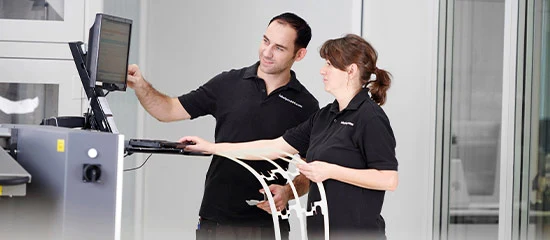
Basic knowledge packaging: What is tertiary packaging?
Imagine you have a large vineyard that produces increasingly larger yields. First it was just a few bottles that you gave away to family, later cases that were sold to your extended circle of friends. This year you can now sell several hundred bottles of wine and would like to deliver them to supermarkets in the region. The question now is: How can you prepare the transport so that the goods remain undamaged?
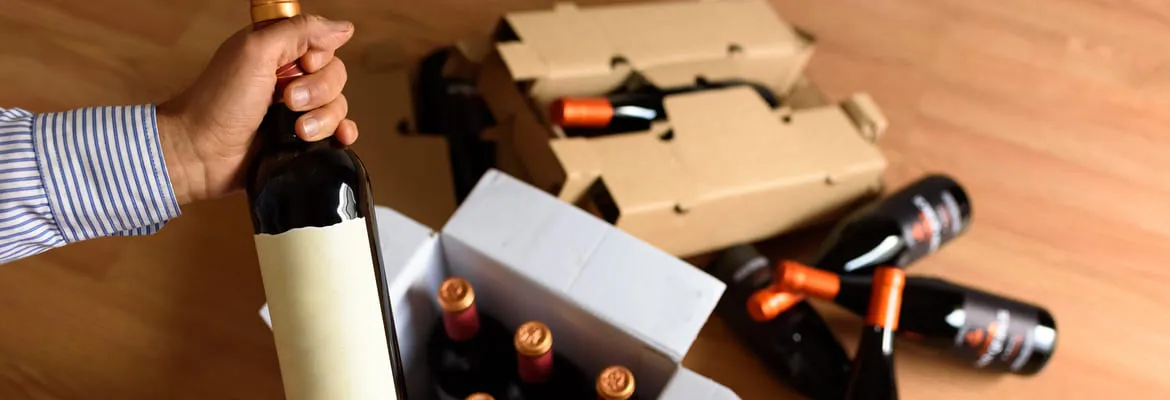
Definition of tertiary packaging
The so-called tertiary packaging is ideally suited for this purpose. After primary and secondary packaging, tertiary packaging is at the end of the packaging process. Consumers rarely get their hands on them, as tertiary packaging is primarily used in the B2B sector. The synonymous term "transport packaging" already reveals the function of tertiary packaging. Among other things, they provide for the bundling of several secondary packages, which serves a smooth transport of goods.
- Primary packaging is sales packaging with direct contact to the product.
For example: glass bottle Secondary packaging further secures primary packaging and provides space for information and design.
For example: carton for six bottles of wineTertiary packaging secures, protects and bundles several secondary packages.
For example: 50 wine cartons stacked on pallets and wrapped with film.

Product Advisor for Shipping Boxes
Whether it’s a simple folding box or a maxi letter box with adhesive strips – I’m your advisor for shipping boxes made from corrugated cardboard. Our printed packaging and inlays provide protection for products across almost all industries.
"Security and design? Corrugated cardboard offers both!"
I will be happy to help you personally.
What can tertiary packaging do?
Bundling function:
They combine a number of secondary packages into one load unit, which can thus be stored and transported more efficiently. In this way, transport between the value creation stages is safe and uncomplicated. By compacting the transport goods, space is saved and storage and transport costs are reduced.
Safety function:
Damage can quickly occur during transport. If, for example, a truck has to brake suddenly, transport packaging protects the goods from uncontrolled scattering inside the vehicle. Another example are Euro pallets on which the cargo can be stacked. They enable safe loading and unloading of the cargo units. Film wrapping additionally increases pallet stability, giving the goods more security during transport.
Protective function:
Depending on the goods, tertiary packaging also protects against moisture, heat and damage. For example, transport packaging protects the cargo from precipitation through water-repellent material properties.
What you can expect from tertiary packaging
Tertiary packaging primarily fulfils the tasks mentioned above. In addition to these, there are a number of other requirements on the market that are important for choosing the right transport packaging.
The use of transport packaging is primarily purpose-bound. In contrast to secondary packaging, an attractive appearance is not essential for tertiary packaging, as it does not have to fulfil a sales-promoting function.
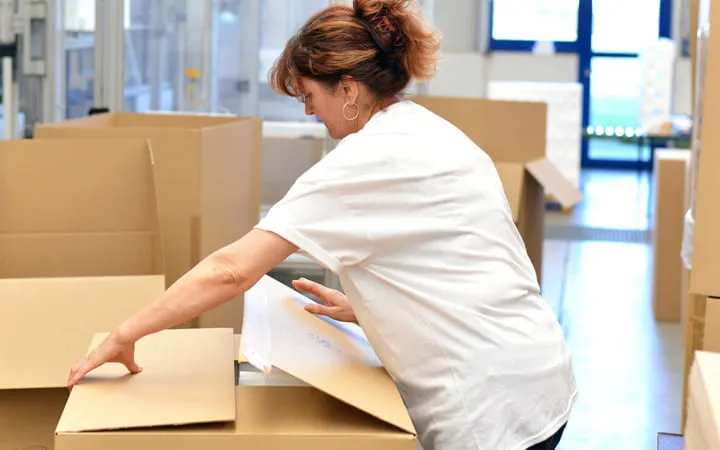
The optimum effect is achieved when they make transport simple, time-saving and with little effort. In the end, the packaging should always create added value when loading and unloading the goods.
For certain products, the specific material properties of the packaging materials also become important. In the case of sensitive electronics, for example, it is necessary that the packaging prevents electronic charging due to environmental effects. Corrugated board, for example, is not suitable for wet environments, whereas film is. Adhesives are often transported in drums, which sometimes even have to be lined with film to prevent chemical reactions between the materials. Different goods therefore have different demands on tertiary packaging.
The issue of sustainability also places new demands on transport packaging. Innovations make it possible to set higher standards today than a few years ago. Reusable packaging solutions are quite common nowadays. Plastic pallets are a current example of this. These have a longer life, are easier to clean and weigh less. They are one of the examples that significantly reduce raw material consumption and can be returned to the value-added cycle. When using transport packaging, the goods should be protected as well as the environment.
The securing of transport goods is regulated in section 22 of the German Road Traffic Regulations (StVO). This sets concrete limits up to which the load may be deformed, shifted or tipped. The background to this is that the load is exposed to various tensile and compressive loads during transport and damage to goods in traffic should be minimised.
Interplay between secondary and tertiary packaging
Outer packaging and transport packaging are closely connected. How well the two fit together significantly influences the efficiency of logistical processes. Stacking and storing your wine bottles, for example, becomes easier if you use modular custom-made cartons as secondary packaging. Warehouse and transporter capacity can thus be fully utilised.
The right choice of secondary packaging also affects fuel consumption. Therefore, it is important to choose an outer packaging with minimum weight so that the cargo is well protected but not unnecessarily heavy.
Tertiary packaging also benefits enormously, as the necessary material can be calculated more accurately if the secondary packaging is chosen sensibly.
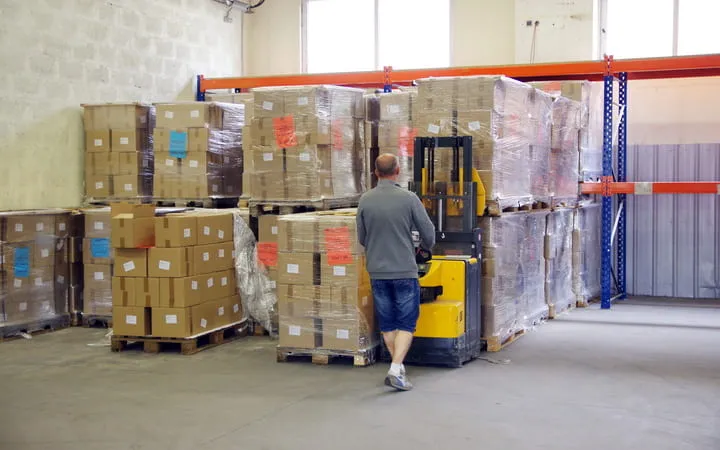
This material is used for tertiary packaging
The choice of suitable transport packaging depends on factors such as the height of the load, weight and nature of the goods. For boxes with sharp edges, different transport packaging is usually appropriate than for round tanks containing liquids.
With any material, however, it is important that it is resistant in order to adequately fulfil the protective and securing function.
When looking for the optimal transport packaging for your wine delivery, you can turn to specialised wholesalers. In smaller quantities, you can even find some materials in DIY stores.
These materials are suitable for tertiary packaging:
- Film e.g. shrink or stretch films
- Corrugated cardboard e.g. trays or boxes
- Wood e.g. Euro pallets or crates
- Metal e.g. mesh boxes or barrels
- Plastic e.g. tanks or big bags.
Film packaging: How transparent tertiary packaging is
In film packaging, a distinction is made primarily between stretch and shrink film
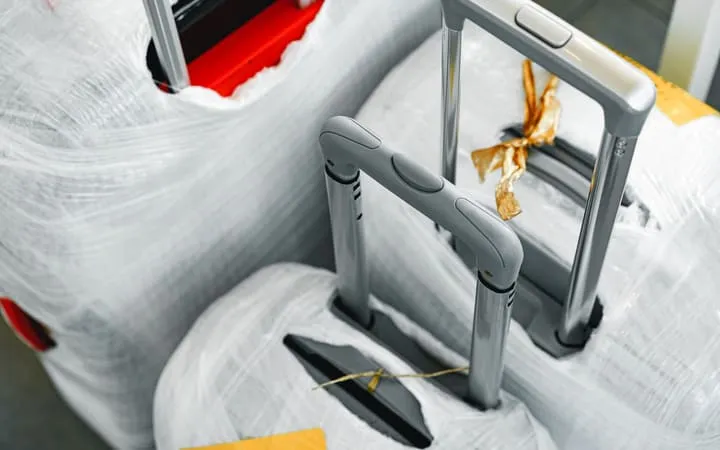
Number 1: Stretch film
Stretch film is available in different widths, thicknesses and colours. The quality is measured by the puncture and tear resistance of the film.
You have certainly seen the bales of hay wrapped in light green film standing near a field. This is green agricultural stretch film. In this case, the stretch film mainly serves to make the hay last longer.
In the rain, however, the films also shine because of their protective function. This is also often used at airports. In so-called luggage wrapping, pieces of luggage are wrapped in film to protect them from scratches, dirt, viruses and moisture. The same principle could protect your wine delivery.
For stretch films as transport packaging, a distinction is made between hand and machine stretch films. Hand stretch films are wrapped around the goods by hand with a roller, while there are corresponding machines for machine stretch films. In both cases, the wrapping creates several layers that are optimally joined by the adhesion of the film.
Number 2: High-tech stretch film
The innovative high-tech stretch film is finding more and more applications. It is about half as thick and twice as stretchy as conventional stretch film, allowing material savings of up to 50%.
What the two types of film have in common is their transparency, which makes it easy to scan barcodes or labels, for example. In addition to the practical advantages, the high-tech stretch film is more environmentally friendly and economical in comparison, which is mainly due to the lower material input.
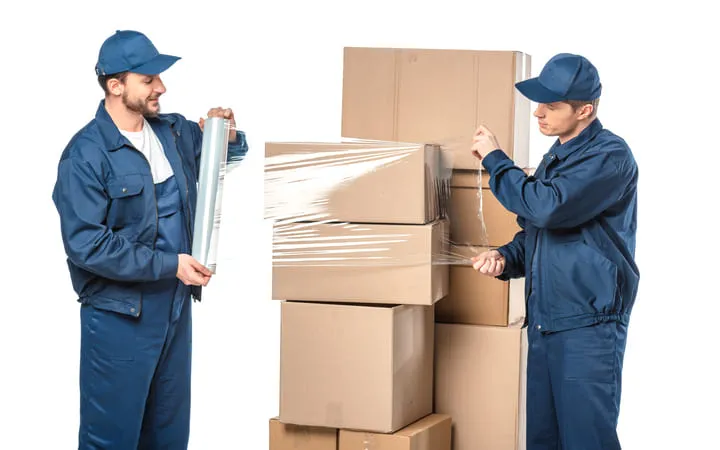
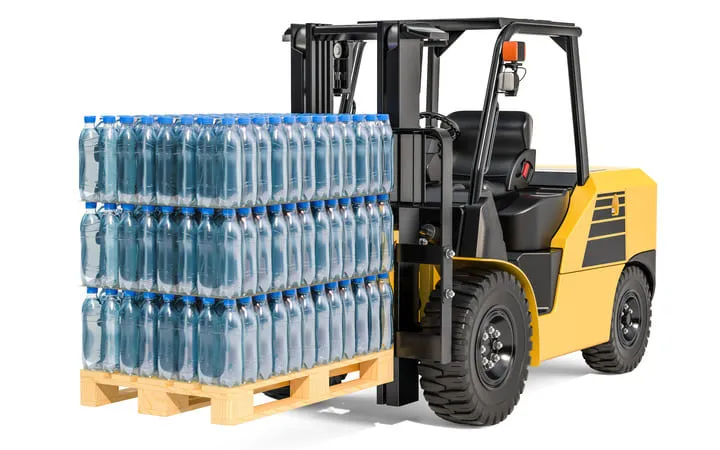
Number 3: Shrink film
Shrink films are like a second skin. Due to the influence of high heat, they cling precisely to the packaged goods and wrap around them on all sides. Shrink films are often produced to order, which is why colour, print and dimensions are usually completely variable. The beverage industry uses them very often to bundle cans or bottles into six-packs.
The goods have a limited air supply under the film, which is why this tertiary packaging is rather unsuitable for goods that release moisture. For this reason, shrink film is also offered with needling or perforation by some suppliers.
n some cases, the classification of packaging can be somewhat confusing. The Packaging Act introduced in 2019 finally defines some terms.
Packaging Act (VerpackG) § 3 Definitions
Packaging is a product made of any material for the reception, protection, handling, delivery or presentation of goods, which may range from raw material to processed product, which is passed on by the manufacturer to the distributor or final consumer and [...].
3. facilitate the handling and transport of goods in such a way as to avoid direct contact and damage in transit and are not typically intended to be passed on to the end user (transport packaging); containers for road, rail, sea or air transport are not transport packaging.
This definition shows that filling and cushioning material as well as loading aids also belong to tertiary packaging. The following packaging are also included in addition to film packaging:
- Trays
- Euro pallets
- Wooden boxes
- Big bags for construction waste
- Corrugated or grass paper boxes
- Lattice boxes
- Tanks and barrels.
The wording of the law also clarifies that containers for transport by ship, rail, road or air are not transport packaging.
How sustainable is tertiary packaging really?
Transport packaging accounts for a noteworthy share of the total packaging waste volume. In the case of waste, the most sustainable solution is always reduction. However, this is difficult with tertiary packaging, as it is necessary to secure goods and without it there would likely be more waste due to damage. However, to reduce the volume of material, reusable solutions that go through the logistical processes several times make sense.
For your wine delivery, this means the following. To reduce the waste caused by tertiary packaging you have the option to omit the packaging. You could also stack the wine crates individually in a truck. However, it is then to be expected that some wine bottles will be damaged and therefore cannot go on sale. Loss is therefore inevitable. Alternatively, you can resort to reusable solutions, which can save packaging material.
The VerpackG introduced new guidelines for the disposal of all types of packaging. For transport packaging, this means that the producing companies are made responsible for organising the disposal or recycling of transport packaging. The previous Packaging Ordinance of 1991 assigned this responsibility to the municipalities. The current solution makes sense in that the manufacturers are excellently familiar with the materials and can thus bear the extended product responsibility. The Packaging Act also sets recycling quotas, which are followed by a fine of up to 200,000 Euros in case of non-compliance (§ 34 para. 1 and para. 2 VerpackG). Further information on the Packaging Act can be found here.
However, far-reaching innovations are still necessary for sustainable tertiary packaging. The first important milestones have already been reached with the high-tech stretch film, for example. It considerably minimises the consumption of film packaging, which saves CO2 emissions.
Furthermore, there are now stretch films with a recycled plastic content. These are not yet sufficiently developed in terms of quality, so a trend is still waiting.
The topic of sustainability is preoccupying the entire economy and the packaging industry also needs new innovative approaches to bring sustainable products to the market. The Swiss company Nestlé has launched the so-called "Golden Rule For all Packaging". The company has set itself clear goals in terms of sustainable packaging solutions, including primary, secondary and tertiary packaging.
Based on the same need, numerous companies on the market have now specialised in packaging optimisation. They offer individual consulting to optimise processes. For the disposal of packaging, manufacturers sometimes commission external environmental service providers to assist them with their expertise. By dividing up the work, the newly recognised responsibilities can thus be sensibly shared.
How to generate economic added value through tertiary packaging
The international business magazine Forbes published the study "Empty Space Economy", which revealed that transport containers and packages remain empty by a quarter. This empty space not only costs the economy superfluous money, but also dispensable CO2 emissions. At the latest after this study, it is certain that higher volume efficiency is more sustainable, cheaper and desirable. The solution could, for example, be the choice of the right tertiary packaging.
When choosing your transport packaging, several factors should be considered. These include:
- Production and packaging processes
- Storage and transport
- Sustainability
- Laws and regulations.
When storing and transporting the goods, the stack height, the time of storage, the transport method, the number of times the goods are loaded and unloaded, the temperature and humidity all play a role in turn. The other factors should also be thought through deeply in order to choose the optimal tertiary packaging in the end.
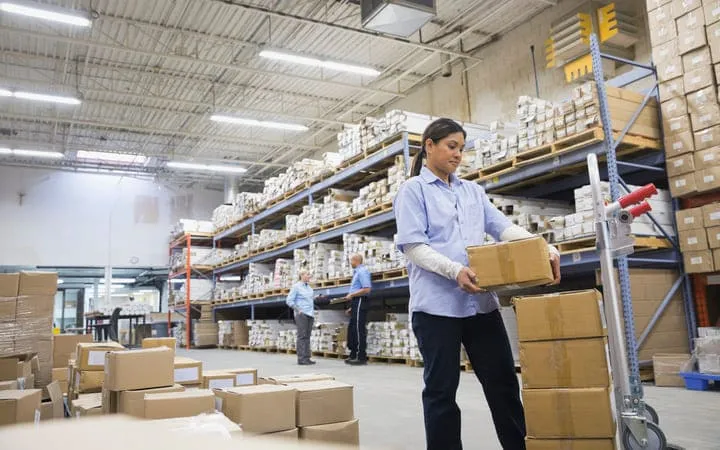
Transport packaging simplifies logistical processes and ensures cost savings in the areas of waste, storage and transport. They play a role in strategic supply chain management planning.
In order to remain relevant in the market in the long term, manufacturers are now faced with the challenge of optimising their materials in order to be able to operate more sustainably.
All advantages at a glance
Tertiary packaging...
- ... group goods into cargo units.
- ... enable efficient storage...
- ... and facilitate transport as well as loading and unloading between the value-adding stages.
- ... protect the goods from scratches, dust, moisture and heat.
- ... stabilise the goods in transport vehicles.
- ... have a time-saving effect on the delivery process.
- ... increase the capacity utilisation of transport vehicles and storage facilities.
- ... are becoming increasingly sustainable.
- ... are very versatile and meet the demands of a wide variety of goods.
- ... are subject to regulated disposal, recycling and reuse guidelines.
Conclusion
Tertiary packaging is the hero in the background. They enrich the logistical process with numerous advantages and ensure smooth processes. In terms of sustainability, there are still big steps to be taken, which can be achieved through ambitious progress.


